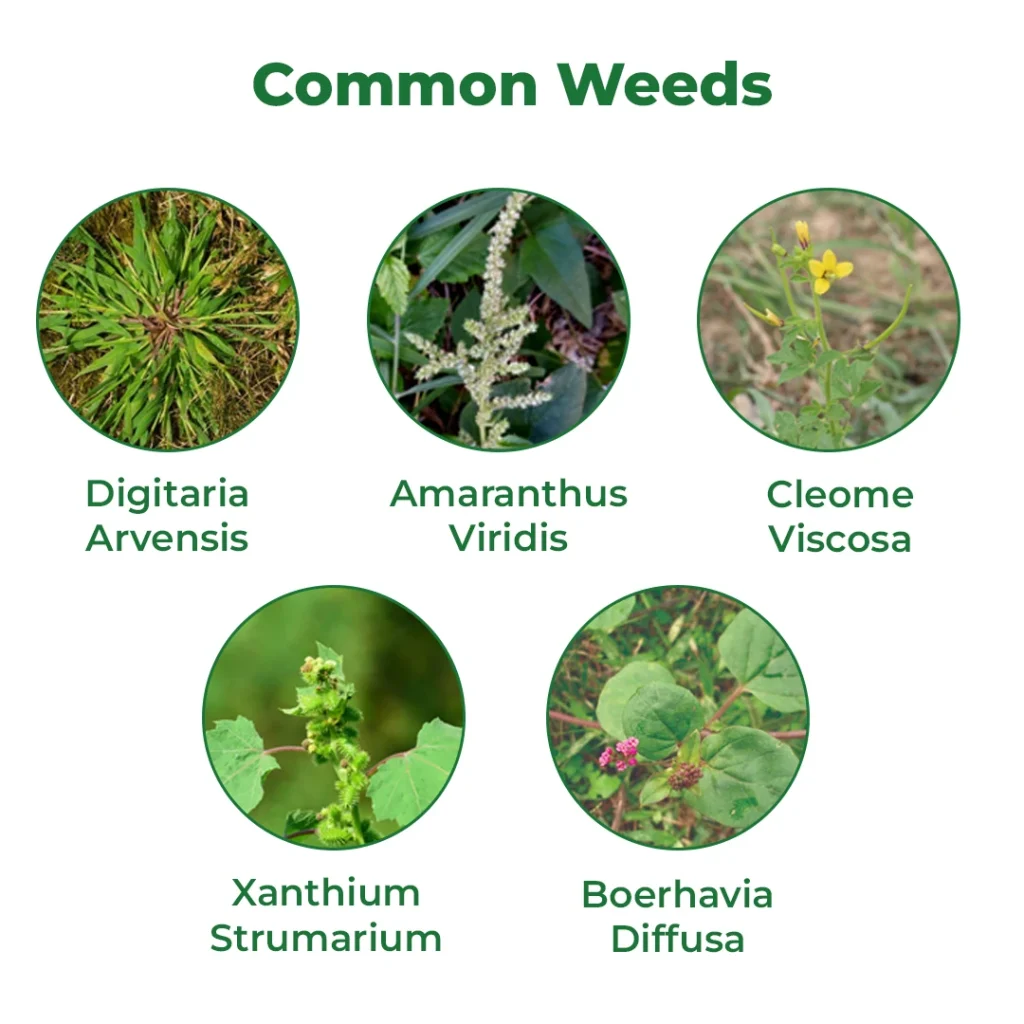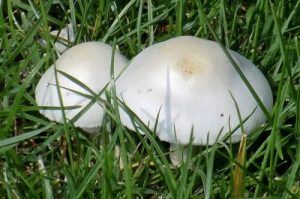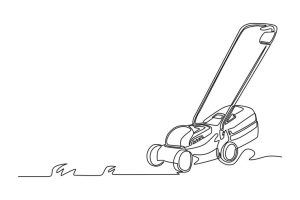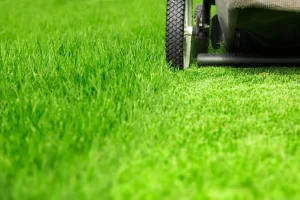Are you tired of battling stubborn weeds that seem to take over your garden or lawn no matter what you do? You’re not alone.
Many people find themselves in a constant struggle against these unwanted plants. But what if there was a way to regain control of your outdoor spaces? Enter Atrazine, a powerful ally in the fight against weeds. We’ll dive into exactly what weeds Atrazine can kill and how it can transform your gardening experience.
Imagine a garden where your plants thrive, free from the competition of pesky weeds. Keep reading to discover how Atrazine could be the secret weapon you’ve been searching for.

Credit: palmerfeed.com
Atrazine Overview
Atrazine effectively targets broadleaf and grassy weeds, including crabgrass, foxtail, and pigweed. It is widely used in corn and sorghum crops to manage unwanted vegetation. This herbicide ensures healthier growth by eliminating competing plants.
Atrazine is a popular herbicide known for its effectiveness in controlling broadleaf and grassy weeds. Used widely in agricultural settings, this chemical plays a crucial role in maintaining healthy crops by minimizing weed competition. But what exactly makes Atrazine so effective against weeds?Chemical Composition
Atrazine is part of the triazine class of herbicides. It consists of a complex structure that allows it to interfere with weed growth processes. Understanding this composition helps you appreciate why it’s effective across a variety of weed types, from dandelions to crabgrass.Mechanism Of Action
Atrazine works by inhibiting photosynthesis in susceptible plants. When applied, it blocks the electron transport chain in the chloroplasts, essentially starving the weed of energy. This specific action ensures that your crops can thrive without the stress of competing weeds, leading to healthier yields. By breaking down its components and mechanism, you can see why Atrazine is a go-to solution for many farmers. Have you ever faced a stubborn weed problem that just wouldn’t budge? Imagine the relief of knowing there’s a targeted solution that tackles the issue at its core.Targeted Weeds
Atrazine is a popular herbicide known for its effectiveness in controlling a wide range of weeds. If you’re tired of battling stubborn weeds in your garden or farm, understanding which specific weeds atrazine targets can help you make informed decisions. This knowledge empowers you to plan your weed control strategy effectively and maximize your efforts.
Broadleaf Weeds
Broadleaf weeds are often the primary culprits ruining your landscape. Atrazine is particularly effective against a variety of these weeds. It targets common nuisances like dandelions, chickweed, and clover, which can quickly overtake your space. Imagine walking through your garden without the frustration of spotting these persistent invaders.
Have you ever noticed how dandelions seem to multiply overnight? Atrazine helps prevent this rapid spread, giving you a fighting chance to reclaim your garden. It’s like having a reliable ally in your battle against these relentless plants.
Grass Weeds
Grass weeds can be just as problematic, especially if you’re striving for a pristine lawn. Atrazine is effective against grass weeds such as crabgrass and foxtail. These pesky intruders can ruin the uniformity of your lawn, making it look patchy and unkempt.
Picture a lawn free of the unsightly patches caused by crabgrass. Atrazine’s ability to target these grass weeds means you can achieve the lush, green carpet you desire. It’s not just about killing weeds; it’s about enhancing the beauty and health of your outdoor space.
Are you tired of manual labor and constant vigilance? Atrazine offers a practical solution that targets specific weeds, reducing the need for constant maintenance. Imagine dedicating more time to enjoying your garden rather than battling unwanted plants.
Application Techniques
Atrazine effectively kills broadleaf weeds and grasses. It targets weeds like crabgrass, dandelions, and henbit. This herbicide is widely used in cornfields and turf management.
Atrazine is widely used for controlling weeds in agricultural fields. Knowing the right application techniques can enhance its effectiveness. It targets a variety of weeds, promoting healthy crop growth. Understanding pre-emergence and post-emergence applications ensures optimal weed management.Pre-emergence Use
Applying atrazine before weeds sprout is crucial. It prevents weed growth from the start. Farmers often use it to target annual grasses and broadleaf weeds. The herbicide forms a barrier in the soil. This stops weeds from emerging. Early application ensures crops have less competition. It helps maintain soil nutrients and moisture for crops. Correct timing is key for effectiveness. Follow soil preparation guidelines before application.Post-emergence Use
Atrazine is effective after weeds appear too. Targeting weeds post-emergence helps reclaim infested fields. This method tackles stubborn and mature weeds. It ensures crops get sunlight and nutrients. Farmers apply atrazine directly on visible weeds. The herbicide penetrates and halts weed growth. Results are usually seen within days. Using atrazine post-emergence requires care. Monitor crops to prevent damage.Environmental Impact
Atrazine is a herbicide that targets broadleaf and grassy weeds. It effectively controls species like lambsquarters, velvetleaf, and foxtail. Widely used in agriculture, it helps maintain crop health by reducing weed competition.
The use of Atrazine as a weed killer brings up significant environmental concerns. While it effectively targets stubborn weeds, its influence extends beyond just the unwanted plants. Understanding its environmental impact is crucial for making informed decisions about its use.Soil Health
Atrazine can persist in soil for extended periods, affecting soil health. This persistence can disrupt the delicate balance of microorganisms crucial for nutrient cycling. Over time, it might lead to reduced soil fertility, impacting crop productivity. Moreover, Atrazine can alter soil structure. This alteration can lead to increased soil erosion and loss of organic matter. Such changes may require additional soil management practices to maintain productivity.Water Contamination
Atrazine is notorious for leaching into water sources. This contamination poses risks to aquatic ecosystems and drinking water quality. High levels of Atrazine in water bodies have been linked to adverse effects on aquatic life, including reproductive issues in fish. Consider the impact on your local water supply. Are there measures in place to filter out such contaminants? Ensuring clean water access is essential for both human health and environmental sustainability. In essence, while Atrazine is effective in weed management, its environmental implications are significant. Balancing the benefits with potential risks is vital for sustainable agricultural practices.Safety Considerations
Atrazine effectively targets various broadleaf and grassy weeds, ensuring efficient weed control. Safety precautions include avoiding application near water sources and wearing protective gear to minimize exposure risks. Proper use enhances garden health while safeguarding the environment.
Atrazine is a powerful herbicide used to control many weeds. While effective, it requires careful handling to ensure safety. Understanding risks associated with atrazine is essential for safe usage. This section discusses safety considerations to keep in mind.Human Health Risks
Atrazine can pose health risks if mishandled. Prolonged exposure may lead to skin irritation. Inhaling atrazine might affect respiratory health. Some studies suggest potential links to endocrine disruption. Handling atrazine with care minimizes these risks. Always wear protective gear during application.Safety Precautions
Follow safety guidelines to reduce atrazine risks. Use gloves and masks when spraying. Keep atrazine away from water sources. Avoid applying on windy days. Store atrazine in secure, labeled containers. Proper disposal of atrazine prevents environmental harm. Regularly check equipment for leaks or damage. Read and follow all label instructions carefully.Alternative Solutions
Atrazine is effective at controlling broadleaf and grassy weeds. It targets species like crabgrass and foxtail. This herbicide is commonly used in agricultural settings to maintain crop health and enhance growth.
When it comes to managing weeds, atrazine is a powerful herbicide known for its effectiveness. However, many gardeners and farmers are seeking alternative solutions that are environmentally friendly and sustainable. Whether you’re concerned about chemical runoff or the health of your soil, exploring these alternatives can offer peace of mind and success in weed control.Organic Options
Organic weed control methods are gaining popularity for their minimal environmental impact. Hand weeding, though labor-intensive, allows you to target specific weeds without harming beneficial plants. You might also consider using mulch, which not only suppresses weed growth but also enriches the soil as it breaks down. Corn gluten meal is another organic option known for its pre-emergent weed control properties. It’s a by-product of corn processing and can prevent weed seeds from germinating.Integrated Weed Management
Integrated Weed Management (IWM) combines various control techniques to manage weeds effectively. This approach reduces reliance on any single method, making it more sustainable and often more effective. Rotate crops to disrupt weed growth cycles and prevent them from adapting to one type of control. Use cover crops to outcompete weeds for sunlight and nutrients. Consider mechanical tools, such as hoes or cultivators, to physically remove weeds. Each of these strategies can reduce weed pressure, making your garden or farm more resilient.Future Of Atrazine
Atrazine effectively controls broadleaf weeds like pigweed, lambsquarters, and velvetleaf. It targets grasses such as crabgrass and foxtail. This herbicide plays a crucial role in managing weed growth in corn and sugarcane fields.
The future of atrazine in weed control is a topic of interest. This herbicide has been effective in controlling many types of weeds. Yet, its use is under scrutiny. Changes in regulations and innovations in weed control are shaping its future.Regulatory Changes
Regulations on atrazine have been evolving. Authorities worldwide are reassessing its safety and environmental impact. Stricter guidelines may limit its use. Farmers might need to look for alternatives. Compliance with new rules will be crucial. The focus is on reducing harm to ecosystems and human health.Innovations In Weed Control
New techniques are emerging in weed management. Farmers are exploring integrated weed management. This approach uses a mix of methods for control. Biological controls and advanced technologies are gaining popularity. These innovations promise to reduce reliance on chemicals. They offer more sustainable options for the future.Credit: www.lawnsite.com
Credit: www.thelawnforum.com
Frequently Asked Questions
What Weeds Will Atrazine Kill?
Atrazine effectively kills broadleaf weeds and grassy weeds. It targets species like crabgrass, foxtail, pigweed, lambsquarters, and ragweed. Atrazine is widely used in corn and sugarcane fields. It offers pre-emergence and post-emergence control, ensuring effective weed management in crops. Always follow label instructions for safe application.
How Long Does It Take For Atrazine To Start Killing Weeds?
Atrazine typically begins killing weeds within one to two weeks. Results can vary depending on environmental conditions and weed types. Ensure proper application for effective weed control. Monitor the treated area for visible changes, as atrazine disrupts weed growth at the root level.
Does Atrazine Kill Crabgrass On A Lawn?
Atrazine effectively kills crabgrass in lawns. Apply it early in the season for best results. It targets weeds without harming most grass types. Always follow application instructions for safety and effectiveness. Consider lawn care professionals for guidance on usage and timing.
When Not To Spray Atrazine?
Avoid spraying atrazine during windy conditions to prevent drift. Do not apply before heavy rain to avoid runoff. Avoid using on sandy or permeable soils. Do not spray near water sources or sensitive crops. Prevent application on stressed plants for best results.
Conclusion
Atrazine effectively tackles a variety of stubborn weeds. This herbicide works well against broadleaf and grassy weeds, making it a versatile choice for farmers. Corn and sugarcane fields benefit from its application. By controlling weeds, it supports healthier crops. Proper usage ensures maximum effectiveness.
Always follow label instructions for safety. Atrazine helps maintain clean fields and boosts crop yields. It’s a reliable option for managing unwanted plants. Consider environmental factors before use. Responsible application protects both crops and the ecosystem. With careful management, atrazine remains a valuable tool in weed control strategies.






